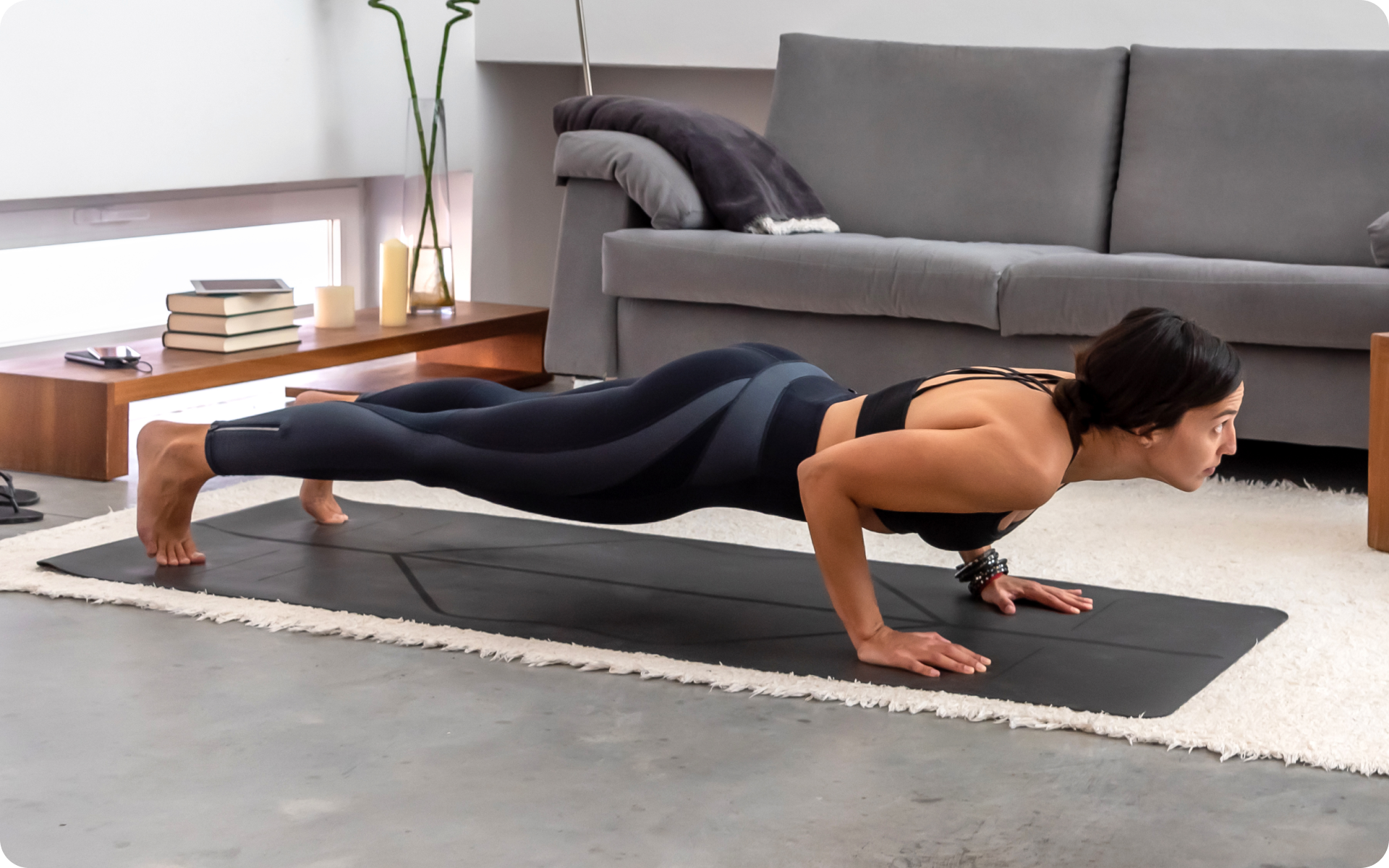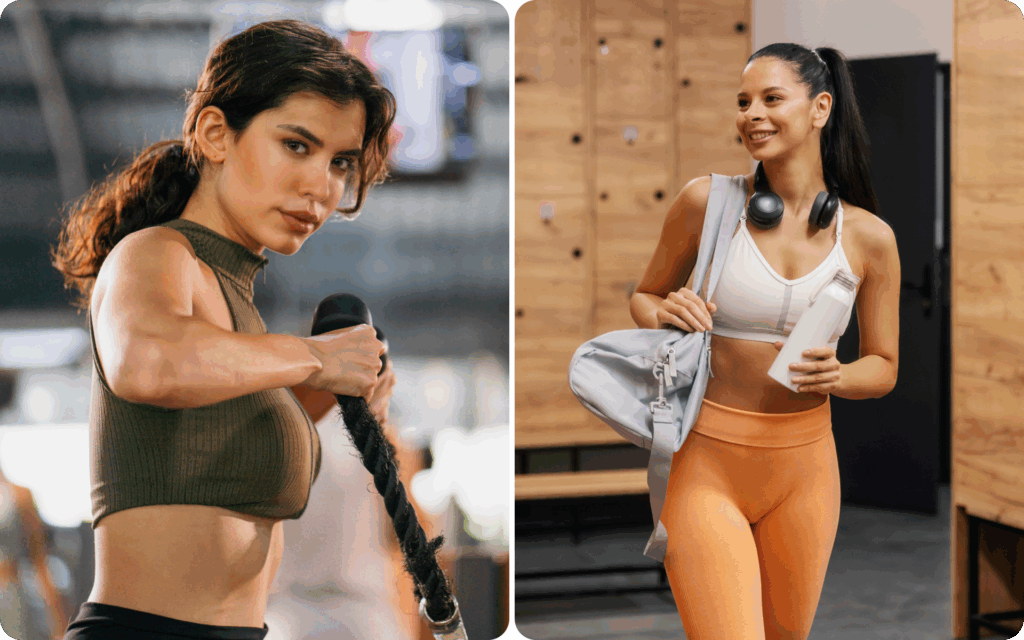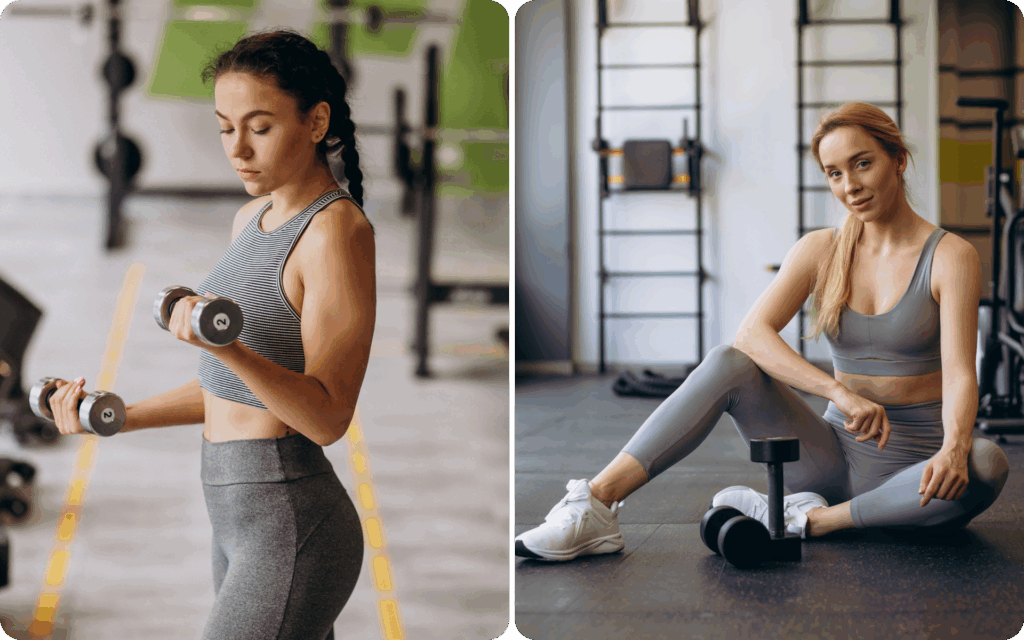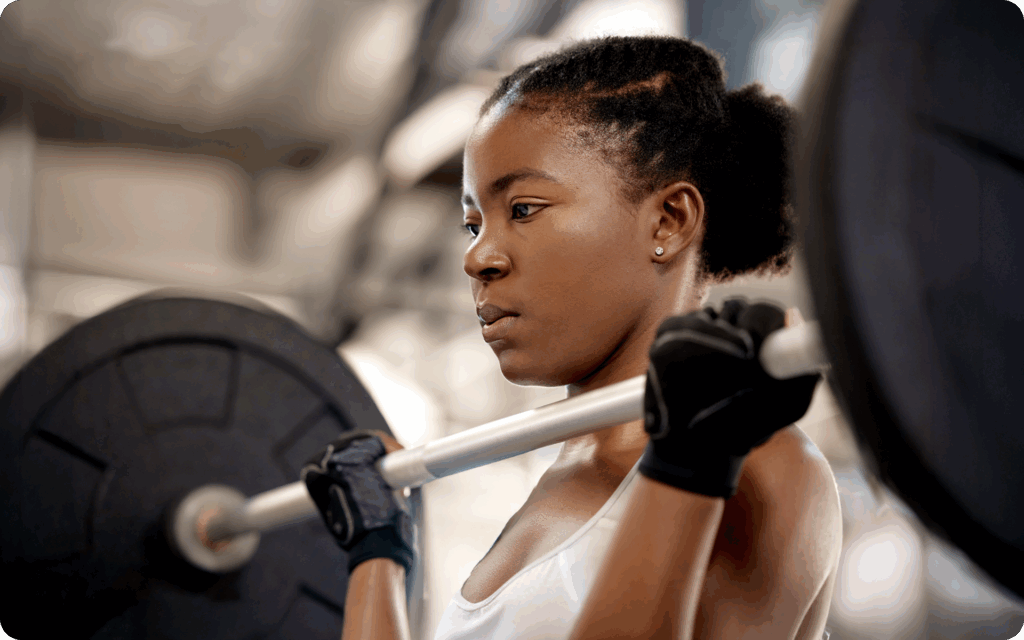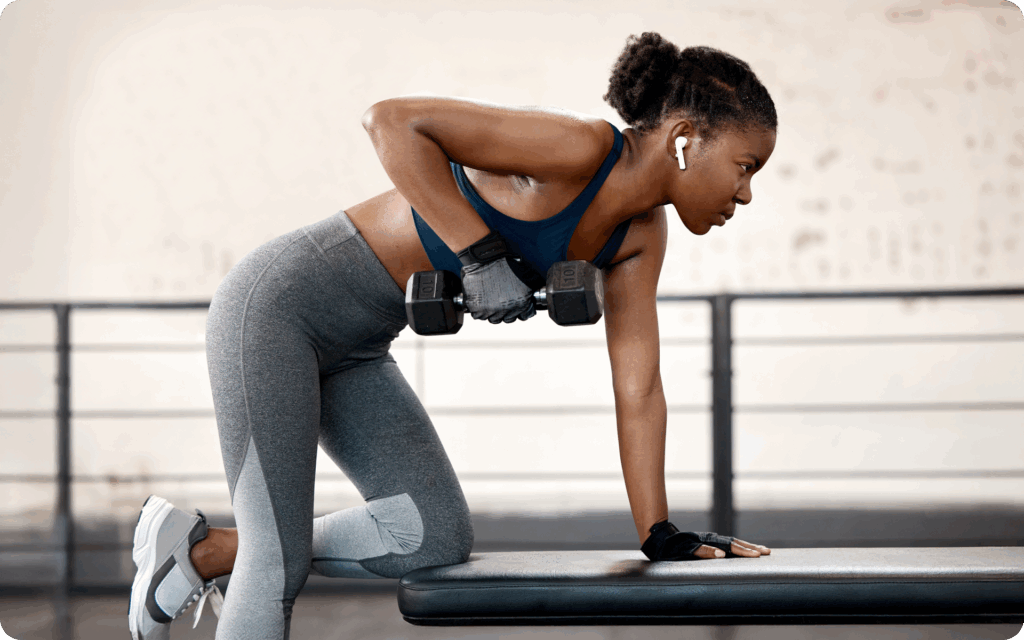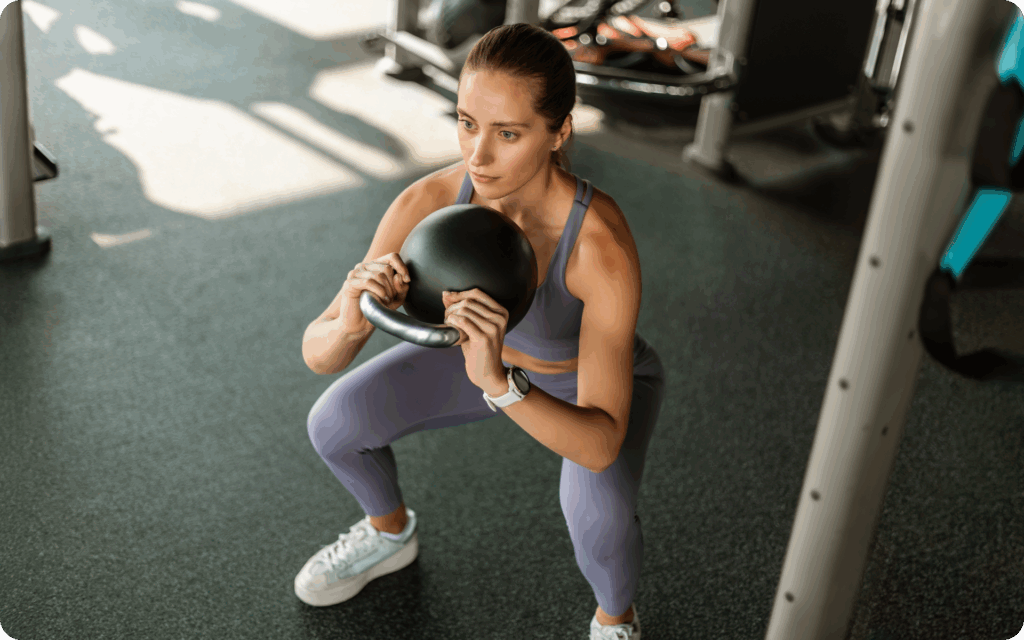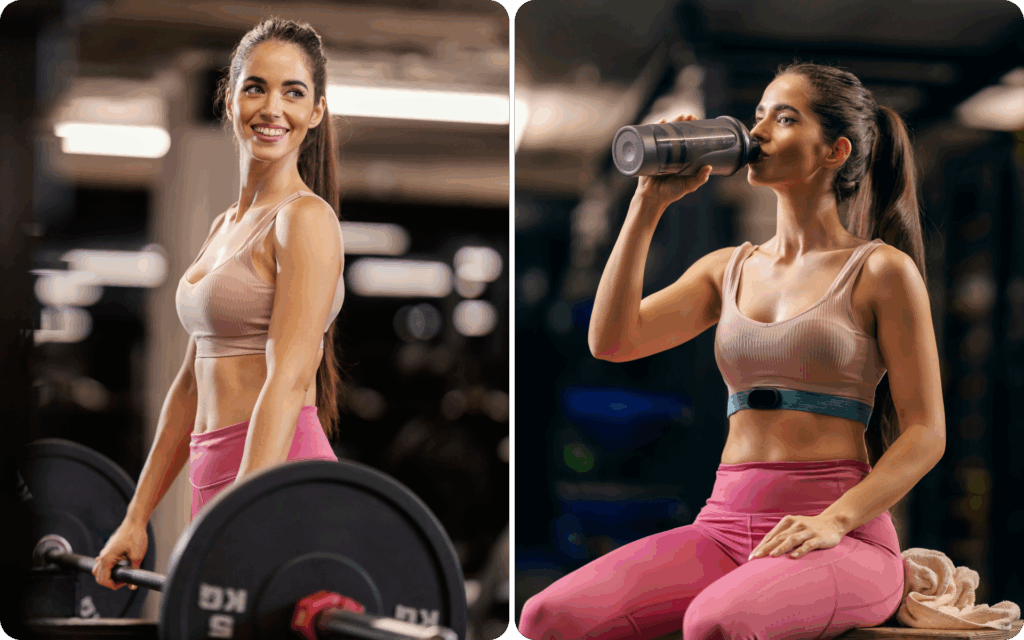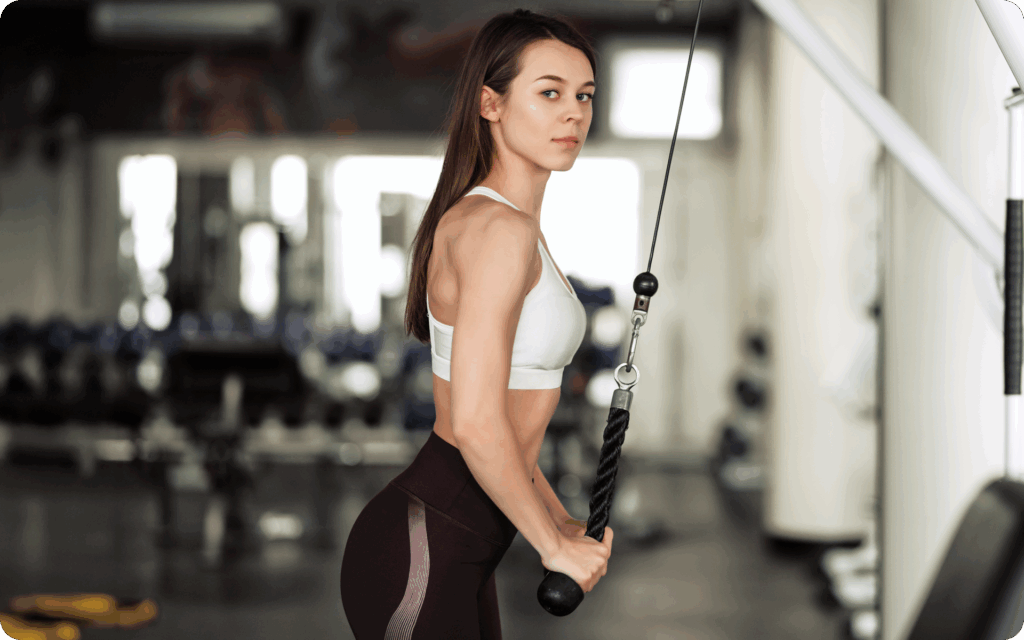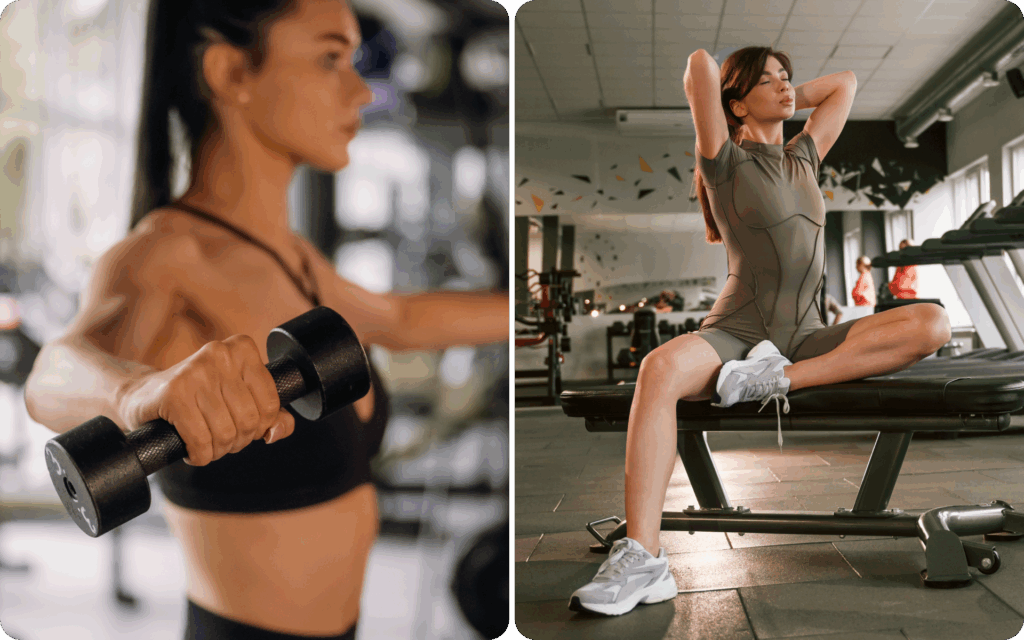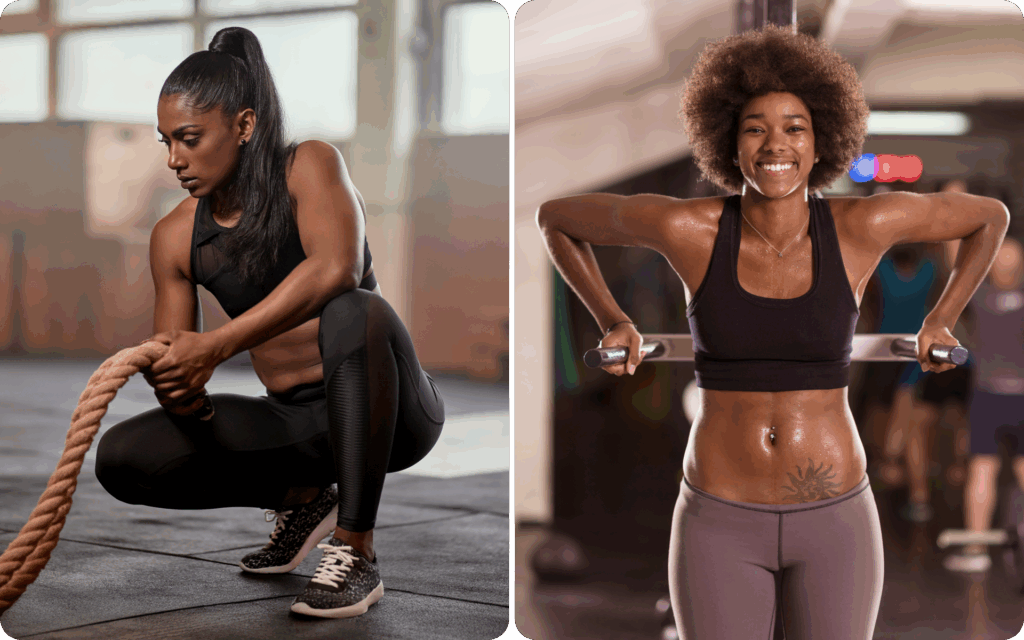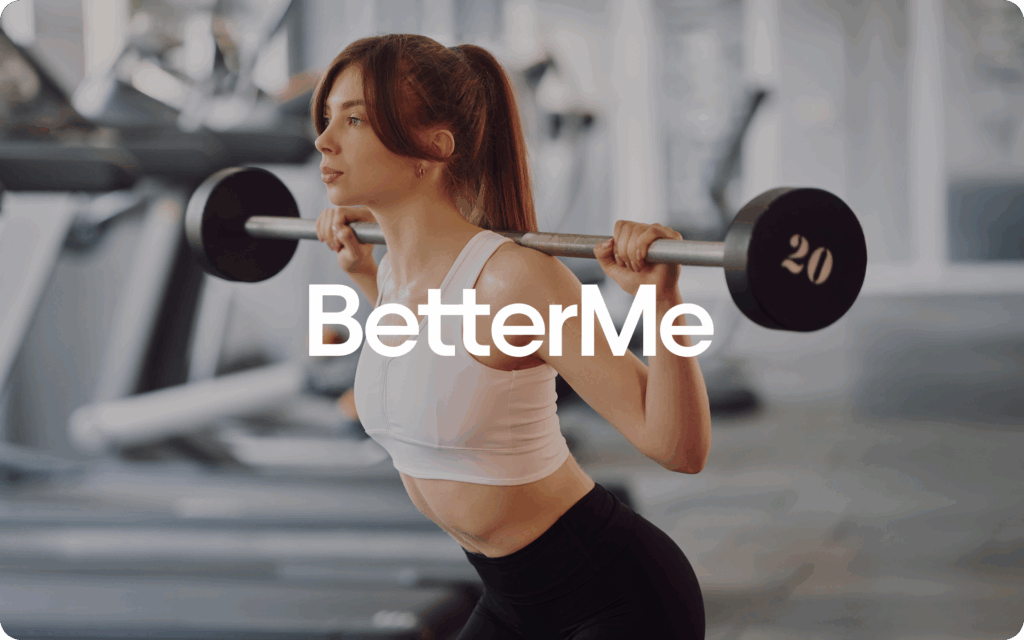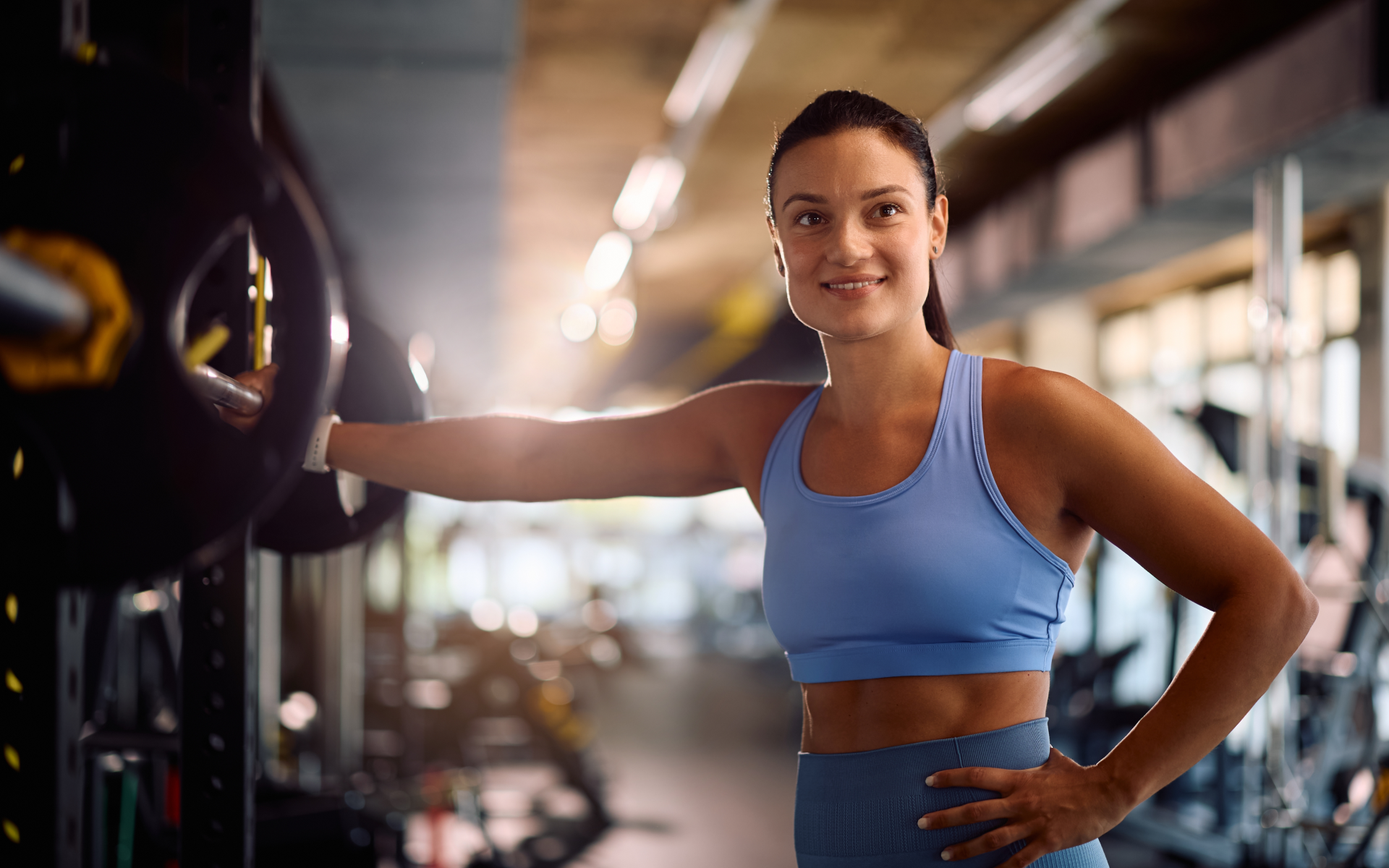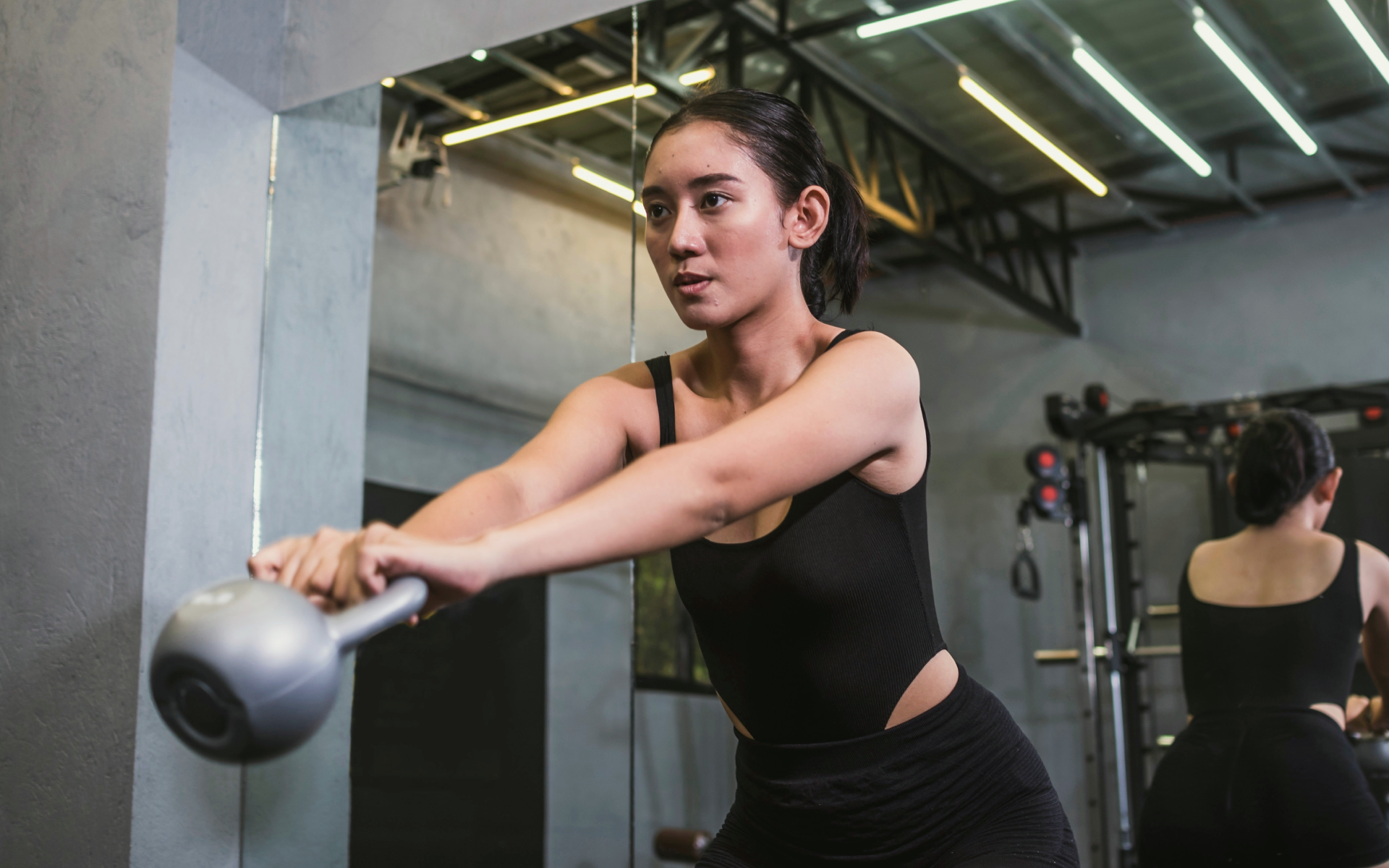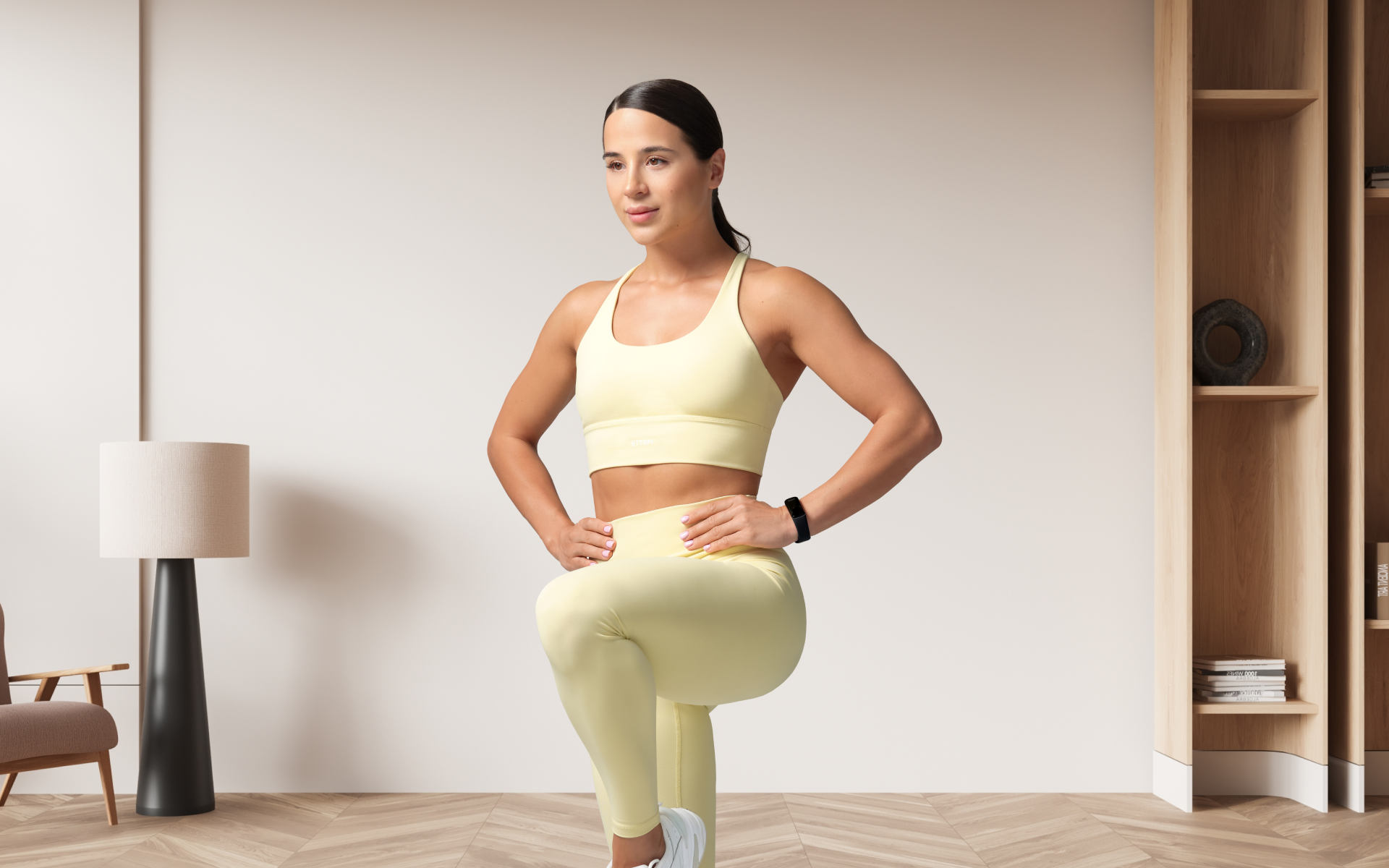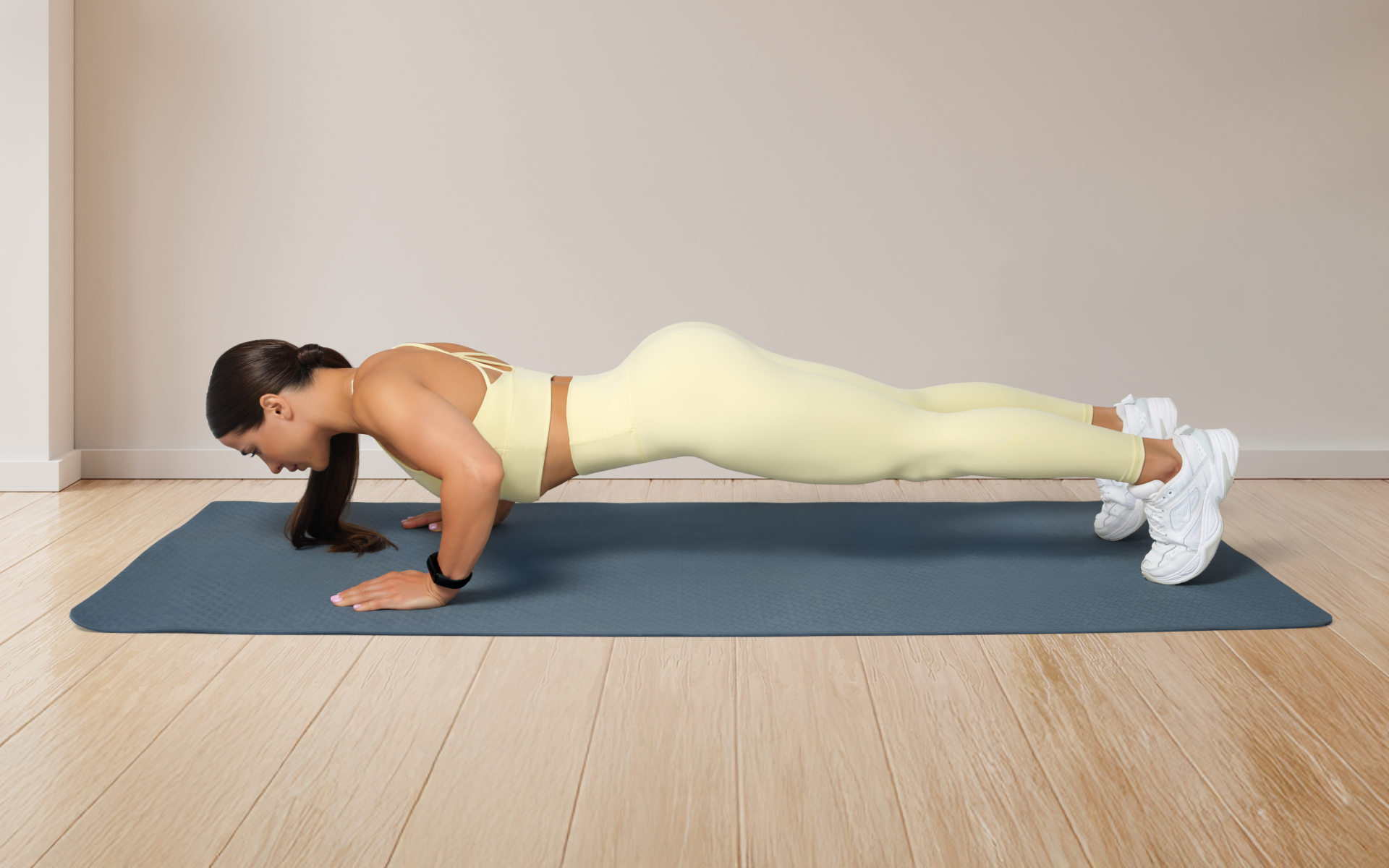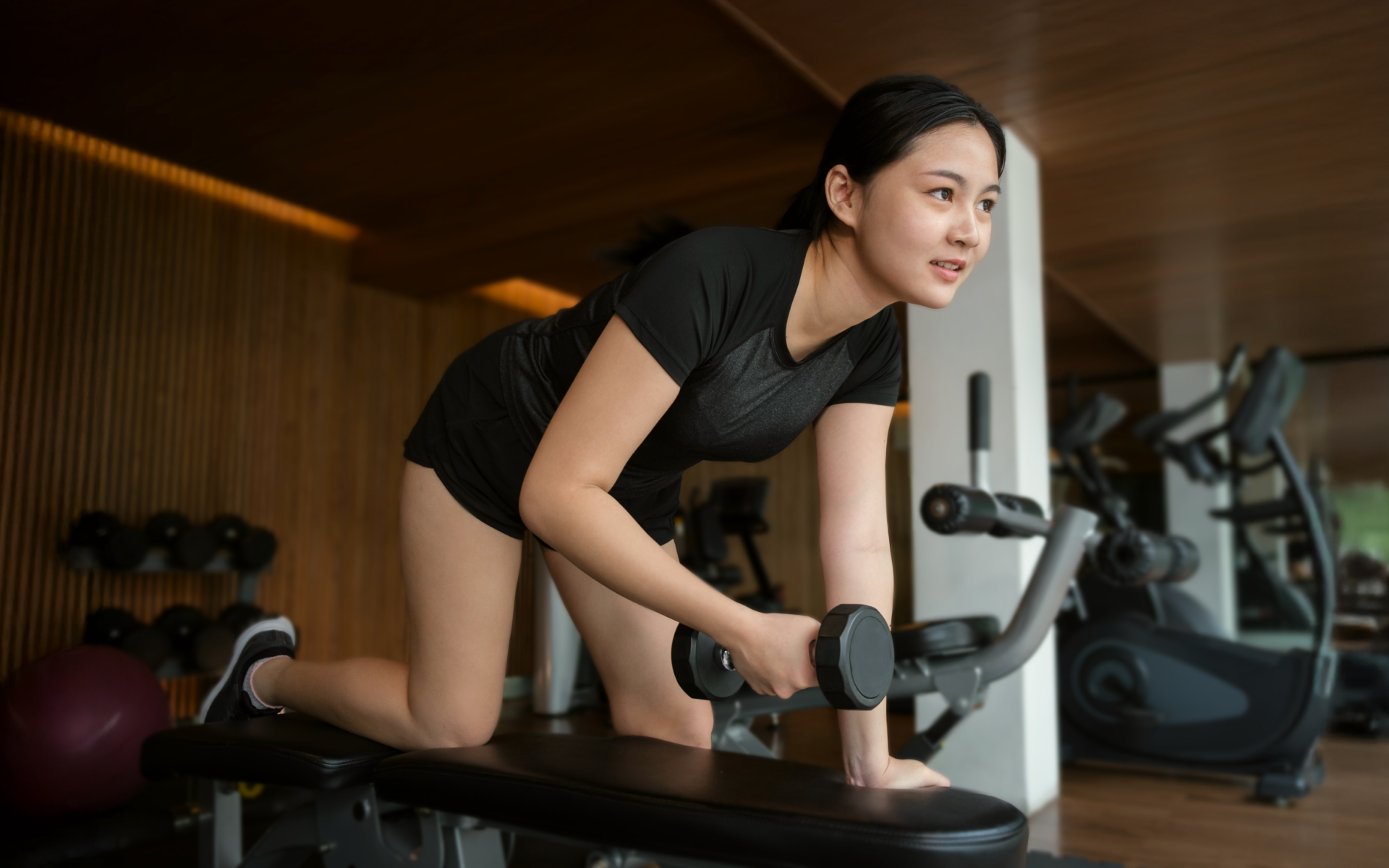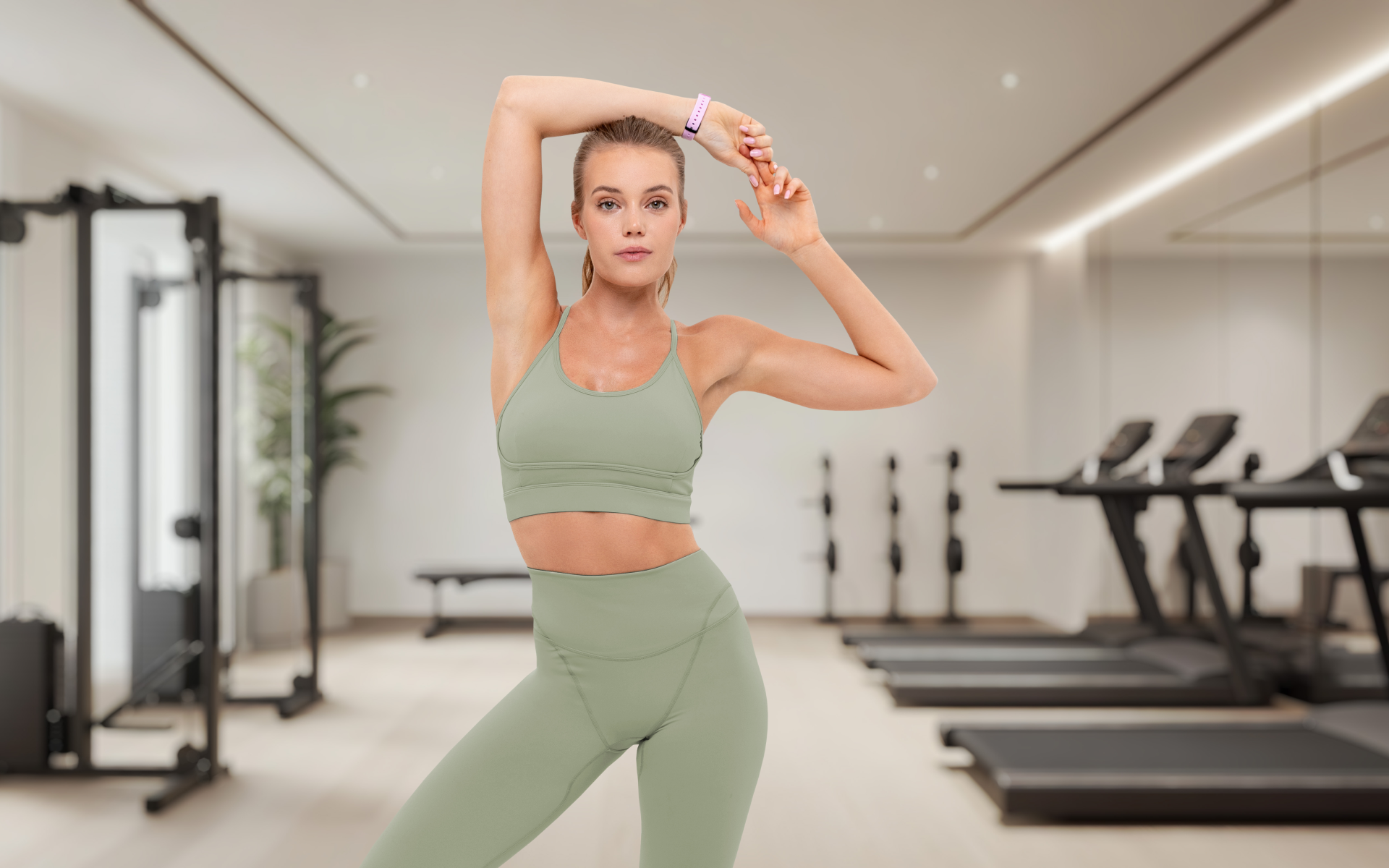Women who understand the power of compound exercises have a significant advantage on their fitness journeys. These multi-joint movements work multiple muscle groups simultaneously, creating efficient workouts that deliver exceptional results in less time.
Compound exercises form the foundation of effective strength training programs. Unlike isolation exercises that target single muscles, compound movements mirror real-world activities and athletic performance patterns. They recruit large muscle groups, challenge your cardiovascular system, and build functional strength that transfers to daily activities.
This comprehensive guide explores the science behind compound exercises for women, addresses common questions about their effectiveness, and provides detailed instructions for six essential movements.
Are Compound Exercises Good for Women?
Compound exercises offer remarkable benefits for women, although these advantages stem from the movements themselves rather than gender-specific adaptations. Research has shown that women respond exceptionally well to compound training due to several physiological factors.
Women typically possess a higher proportion of type 1 muscle fibers, which are more fatigue-resistant and better suited for the sustained effort required in compound movements (1, 2). This fiber type distribution allows women to maintain proper form longer during challenging exercises such as squats and deadlifts.
The hormonal profile in women, particularly higher estrogen levels, provides enhanced recovery capabilities between training sessions. Estrogen supports muscle repair, reduces inflammation, and improves insulin sensitivity (3), which makes compound exercise training more sustainable over time.
Compound exercises deliver multiple benefits (4) that are perfectly aligned with women’s fitness goals:
Functional Strength Development: These movements strengthen muscles in coordination, improving your ability to perform daily activities such as lifting groceries, carrying children, or climbing stairs (5 ).
Time Efficiency: Working multiple muscle groups simultaneously maximizes training benefits within shorter workout sessions (6), which makes it ideal for those with busy schedules.
Metabolic Enhancement: Large muscle group recruitment increases caloric expenditure both during and after exercise (4).
Bone Density Support: Weight-bearing compound exercises provide the mechanical stress that is needed to maintain and improve bone density, which is particularly important for women as they age (7).
Core Stabilization: Compound movements such as deadlifts and bench press require significant core engagement, developing the deep stabilizing muscles (8).
Read more: 5 Hardest Calisthenics Moves Ranked by Difficulty
Do Compound Exercises Burn More Fat?
The fat-burning potential of compound exercises compared to other training methods requires careful examination of the evidence. Compound movements do create favorable conditions for fat loss, but the relationship isn’t as straightforward as many people claim.
Compound exercises burn more calories during the workout session due to their high energy demands. Movements such as squats, deadlifts, and rows recruit large muscle groups simultaneously, requiring significant energy expenditure (9). However, the total caloric burn depends heavily on workout intensity, duration, and individual factors such as body weight and fitness level.
The post-exercise oxygen consumption (EPOC) effect following exercise sessions can extend calorie burning for hours after training. This occurs because your body works to restore oxygen levels, clear metabolic byproducts, and repair muscle tissue. The magnitude of this effect varies considerably between individuals and training protocols (10).
Whether you’re a workout beast or just a beginner making your first foray into the world of fitness and dieting – BetterMe has a lot to offer to both newbies and experts! Install the app and experience the versatility first-hand!
Research comparing different exercise types has shown mixed results for direct fat loss. Some studies have demonstrated superior fat loss with resistance training programs emphasizing compound movements (11, 12), while others have shown similar results between compound and isolation-focused programs when total training volume remains equal (13).
The key factor for fat loss remains energy balance – creating a caloric deficit through the combination of diet and exercise (14). Compound exercises contribute to this deficit effectively by (4):
- Burning calories during training sessions
- Increasing metabolic rate for 12-24 hours post-exercise
- Building muscle tissue that requires energy for maintenance (15)
- Improving insulin sensitivity and glucose metabolism (16)
Women may experience particular advantages with compound exercise fat loss protocols. Research has indicated that women utilize fat as fuel more efficiently than men during exercise, regardless of training status (17). This enhanced fat oxidation capacity makes compound training sessions potentially more effective for women who are pursuing body composition changes.
Is It Better to Do Compound Exercises or Isolation?
The compound versus isolation exercise debate requires understanding that both training methods serve distinct purposes within comprehensive fitness programs. Research has provided clear guidance on when each approach offers optimal benefits.
Compound exercises excel for building functional strength, improving athletic performance, and creating time-efficient workouts. They develop intermuscular coordination – the ability of different muscle groups to work together effectively (18). This coordination transfers directly to sports performance and daily activities.
Studies comparing muscle growth between compound and isolation exercises have shown that both approaches can produce similar hypertrophy when volume and intensity are matched (19). However, compound movements provide superior strength gains due to their demand for neural coordination and stabilization.
Isolation exercises serve specific purposes that compound movements cannot fully address. They allow targeted development of smaller muscle groups, help correct muscular imbalances, and enable focused rehabilitation work. Isolation exercises also permit training around injuries when compound movements may be contraindicated (20).
Examples of compound exercises:
- Squats (target quadriceps, glutes, hamstrings, core)
- Deadlifts (work hamstrings, glutes, erector spinae, traps)
- Pull-ups (develop lats, rhomboids, biceps, core)
- Push-ups (strengthen chest, shoulders, triceps, core)
- Rows (target rhomboids, middle traps, rear delts, biceps)
Examples of isolation exercises:
- Bicep curls (target biceps brachii)
- Leg extensions (focus on quadriceps)
- Lateral raises (isolate deltoids)
- Calf raises (work gastrocnemius and soleus)
- Tricep extensions (target triceps brachii)
Compound exercises work best when:
- Building overall strength and power
- Improving functional movement patterns
- Maximizing training efficiency with limited time
- Developing core stability and coordination
- Creating metabolic stress for body composition changes
Isolation exercises work best when:
- Addressing specific muscle imbalances
- Rehabilitating from injury
- Targeting lagging muscle groups
- Adding training volume without excessive fatigue
- Learning proper muscle activation patterns
For comprehensive results, learn more about the benefits of full-body workout programs that strategically combine both movement types.
What Compound Exercises for Women Are Best?
Based on movement patterns, muscle recruitment, and functional benefits, six compound exercises provide exceptional value for women’s strength training programs. Each movement offers unique advantages while contributing to overall fitness development.
Squats
Squats develop the quadriceps, glutes, hamstrings, and core musculature while improving hip and ankle mobility. This movement pattern appears in countless daily activities, making it essential for functional strength (21).
The squat strengthens muscles, ligaments, and tendons that surround the knee joint when performed with proper form. Full-depth squats through a complete range of motion provide superior strength and mobility benefits compared to partial movements (21).
How to perform squats:
- Stand with your feet shoulder-width apart and your toes pointed slightly outward.
- Engage your core and maintain a neutral spine.
- Initiate the movement by pushing your hips back.
- Lower your body until your thighs are parallel to the floor.
- Drive through your heels to return to the starting position.
- Keep your chest up and your knees tracking over your toes throughout.
Deadlifts
Deadlifts target the posterior chain – hamstrings, glutes, and erector spinae – while developing grip strength and core stability. This movement teaches proper hip hinge mechanics that are essential for injury prevention (22).
The deadlift builds strength in the muscles that support spinal alignment and posture. Women often benefit significantly from deadlift training due to the ability of the exercise to strengthen commonly weak areas such as the glutes and upper back.
How to perform deadlifts:
- Position your feet hip-width apart with the barbell over your mid-foot.
- Bend at your hips and knees to grasp the bar with your hands slightly wider than shoulder-width apart.
- Maintain a neutral spine with your chest up and your shoulders back.
- Engage your lats by pulling the bar toward your body.
- Drive through your heels while extending your hips and knees simultaneously.
- Stand tall at the top, then reverse the movement with control.
Push-ups
Push-ups develop the chest, shoulders, and triceps while requiring significant core stabilization. This exercise builds upper-body pressing strength using only bodyweight resistance (23).
Push-ups can be modified to suit all fitness levels, from wall push-ups for beginners to single-arm variations for advanced trainees. The movement teaches proper scapular mechanics and shoulder stability.
How to perform push-ups:
- Start in a plank position with your hands slightly wider than shoulder-width apart.
- Maintain a straight line from your head to your heels.
- Lower your chest toward the floor while keeping your elbows close to your body.
- Push through your palms to return to the starting position.
- Keep your core engaged throughout the entire movement.
- Breathe in during the descent and out during the push.
BetterMe: Health Coaching app helps you achieve your body goals with ease and efficiency by helping to choose proper meal plans and effective workouts. Start using our app and you will see good results in a short time.
Pull-ups/Lat Pulldowns
Pull-ups develop the latissimus dorsi, rhomboids, middle trapezius, and biceps while improving grip strength. This vertical pulling pattern balances horizontal pressing movements (24).
For women who can’t initially perform bodyweight pull-ups, lat pulldowns provide similar muscle activation patterns with adjustable resistance. Progressive training can build toward unassisted pull-ups over time.
How to perform lat pulldowns:
- Sit at the lat pulldown machine with your thighs secured under the pads.
- Grasp the bar with an overhand grip, your arms slightly wider than shoulder-width apart.
- Lean back slightly and engage your core.
- Pull the bar toward your upper chest by driving your elbows down and back.
- Squeeze your shoulder blades together at the bottom.
- Control the weight as it returns to the starting position.
Rows
Rowing movements strengthen the rhomboids, middle trapezius, and rear deltoids while improving posture. These exercises counteract the forward head posture common in modern life.
Bent-over rows, seated cable rows, and single-arm dumbbell rows all provide excellent muscle development. The rowing pattern teaches proper scapular retraction and thoracic extension.
How to perform bent-over rows:
- Hold a barbell with an overhand grip, your hands shoulder-width apart.
- Hinge at your hips with your knees slightly bent and your torso almost parallel to the floor.
- Let the bar hang with your arms extended and your shoulders pulled down.
- Row the bar toward your lower ribcage by driving your elbows back.
- Squeeze your shoulder blades together at the top of the movement.
- Lower the weight with control to complete the repetition.
BetterMe will shake off your mental funk, rid you of your energy-zapping habits, and help you sculpt the body of your dreams. Intrigued? Hurry up and change your life for the better!
Hip Thrusts
Hip thrusts specifically target the glutes while teaching proper hip extension mechanics. This exercise addresses common weaknesses in the posterior chain that contribute to lower-back pain and knee issues.
The hip thrust allows for heavy loading of the glutes through their full range of motion. Women often respond exceptionally well to this exercise due to favorable biomechanics and muscle fiber distribution.
How to perform hip thrusts:
- Sit with your upper back against a bench and a barbell across your hips.
- Plant your feet flat on the floor with your knees bent at 90 degrees.
- Drive through your heels to lift your hips toward the ceiling.
- Squeeze your glutes at the top position.
- Lower your hips with control until you feel a stretch in your glutes.
- Maintain neutral spine alignment throughout the movement.
Consider exploring a 3-day compound workout routine to effectively incorporate these exercises into your training schedule.
Read more: Smart 4-Day Upper-Lower Split for Hypertrophy
Are 5 Compound Exercises Enough?
Five compound exercises can provide comprehensive strength development and fitness benefits, although the adequacy depends on your specific goals, training experience, and available time for exercise.
Research from the National Strength and Conditioning Association indicated that training programs that focus on fundamental movement patterns – squatting, hinging, pushing, pulling, and carrying – can deliver excellent results. These five patterns address all major muscle groups and movement requirements (25).
A well-designed five-exercise program may include:
- Squats (knee-dominant lower body)
- Deadlifts (hip-dominant lower body)
- Push-ups or overhead press (vertical/horizontal pushing)
- Pull-ups or rows (vertical/horizontal pulling)
- Loaded carries or planks (core stability)
For beginners and time-constrained individuals, five compound exercises provide substantial benefits. Novice trainees can experience significant strength gains and muscle development with minimal exercise variety when training 2-3 times per week (26).
However, long-term progression may require additional exercises to address specific needs:
Movement pattern gaps: Five exercises may not cover all movement planes or address individual muscle imbalances that develop over time.
Specialization requirements: Athletes or individuals with specific performance goals may need additional exercises that target particular muscle groups or movement skills.
Injury prevention: Adding corrective exercises and mobility work becomes increasingly important as training experience and intensity progress.
Motivation and adherence: Some individuals benefit from greater exercise variety to maintain engagement and prevent training monotony.
Training frequency recommendations from exercise science research suggest that most individuals can maintain strength with 1-2 sessions per week, but require 3-5 sessions weekly to continue progressing (26). Five compound exercises can easily fill these sessions when combined with appropriate progression strategies.
The key lies in progressive overload – gradually increasing weight, repetitions, or training density over time. Five exercises provide ample opportunity for progression when approached systematically.
What Happens if I Only Do Compound Exercises?
Training exclusively with compound exercises presents no significant downsides for most women, particularly those who are focused on general fitness, functional strength, and body composition improvements.
Compound exercise programs offer several advantages that make them sustainable long-term training approaches (4):
Complete muscle development: Compound movements recruit all the major muscle groups, which ensures balanced development across your entire body. The squat pattern works your legs and core, pulling movements develop your back and arms, and pushing exercises strengthen your chest and shoulders (21).
Functional carryover: These exercises mirror real-world movement patterns, improving your ability to perform daily activities with greater ease and a reduced risk of injury.
Time efficiency: Working multiple muscle groups simultaneously maximizes training benefits within shorter sessions, which makes consistency more achievable with busy schedules.
Neurological adaptation: Compound exercises develop intermuscular coordination – the ability of different muscle groups to work together effectively (18). This coordination improves overall movement quality and athletic performance.
However, certain considerations may warrant the inclusion of some isolation exercises:
Muscle imbalances: If assessment reveals significant strength discrepancies between opposing muscle groups, targeted isolation work may help restore balance more efficiently than compound exercises alone.
Injury history: Previous injuries sometimes require specific strengthening of individual muscles that may not receive adequate stimulus from compound movements.
Aesthetic goals: Individuals who are looking to achieve the maximum development of particular muscle groups may benefit from adding isolation exercises to target specific areas.
Training plateaus: After months or years of compound-only training, adding isolation exercises can provide novel stimuli to promote continued adaptation.
Research has shown that both multi-joint and single-joint exercises produce great outcomes for strength, muscle mass, and functional performance in most populations (6). The American College of Sports Medicine recommends combining both single-joint and multi-joint routines (27).
For women specifically, compound-only programs align well with their typical fitness goals. These exercises address the movement patterns and muscle groups that are most relevant for daily life, sports participation, and long-term health maintenance.
Women’s physiological advantages, which include superior recovery capacity, efficient fat utilization, and greater fatigue resistance, make them particularly well-suited for compound exercise programs that demand sustained effort and coordination.
To maximize fat loss potential, explore specific strategies for using сompound exercises for weight loss effectively.
Frequently Asked Questions
What are the negatives of compound exercises?
Compound exercises have a steeper learning curve than isolation movements, requiring proper technique instruction to perform safely and effectively. The complexity of these multi-joint movements means form breakdown can occur under fatigue, potentially increasing injury risk if not properly managed.
Some individuals may experience delayed soreness or fatigue due to the high muscle recruitment and metabolic demands of compound exercises. The total-body nature of these movements can also make training around certain injuries that might allow for isolation exercise alternatives challenging.
Can I do compound exercises daily?
Daily compound exercise training isn’t recommended for most individuals due to recovery requirements. These movements place significant stress on multiple muscle groups, joints, and the nervous system, requiring 48 hours for complete recovery between sessions (28).
Training frequency research has indicated that 2-3 compound exercise sessions per week optimize strength and muscle development while allowing adequate recovery (29). Advanced trainees might be able to handle higher frequencies with careful program design, but daily training typically leads to accumulated fatigue and diminished performance over time.
Do compound exercises build size?
Compound exercises effectively build muscle size when combined with appropriate training volume, progressive overload, and adequate nutrition. Research has demonstrated that compound movements such as squats and deadlifts produce similar hypertrophy to isolation exercises when training variables are matched (13).
The multi-muscle recruitment of compound exercises allows for heavier loading and greater total training volume, both of which are key factors for muscle growth. However, individuals who are looking to achieve the maximum development of specific muscle groups may benefit from combining compound movements with targeted isolation work.
Can you get ripped with compound exercises?
Compound exercises can contribute significantly to achieving a “ripped” physique by building muscle mass and burning calories during training sessions. However, visible muscle definition requires low body fat levels that are achieved primarily by creating a caloric deficit through a combination of diet and exercise.
The metabolic demands of compound exercise training support fat loss efforts through increased calorie expenditure and improved insulin sensitivity. Combined with proper nutrition, compound exercises provide an effective foundation for body composition improvements, although isolated abdominal exercises aren’t necessary for core development when full-body compound movements are performed consistently.
The Bottom Line
Compound exercises provide women with an efficient, effective path to strength, functional fitness, and body composition improvements. These movements address multiple fitness goals simultaneously while also laying the foundation for long-term health and performance.
The six exercises outlined here – squats, deadlifts, push-ups, pull-ups, rows, and hip thrusts – form the cornerstone of comprehensive training programs. Start with bodyweight variations if you’re new to exercise, then progress to loaded versions as your strength and confidence develop.
Focus on mastering proper form with lighter resistance before you advance to challenging loads. Consider working with a qualified trainer initially to ensure safe, effective technique development.
DISCLAIMER:
This article is intended for general informational purposes only and does not serve to address individual circumstances. It is not a substitute for professional advice or help and should not be relied on for making any kind of decision-making. Any action taken as a direct or indirect result of the information in this article is entirely at your own risk and is your sole responsibility.
BetterMe, its content staff, and its medical advisors accept no responsibility for inaccuracies, errors, misstatements, inconsistencies, or omissions and specifically disclaim any liability, loss or risk, personal, professional or otherwise, which may be incurred as a consequence, directly or indirectly, of the use and/or application of any content.
You should always seek the advice of your physician or other qualified health provider with any questions you may have regarding a medical condition or your specific situation. Never disregard professional medical advice or delay seeking it because of BetterMe content. If you suspect or think you may have a medical emergency, call your doctor.
SOURCES:
- Sex-Based Differences in Skeletal Muscle Kinetics and Fiber-Type Composition (2015, journals.physiology.org)
- Sex differences in skeletal muscle fiber types: A meta‐analysis (2023, onlinelibrary.wiley.com)
- Hormonal Influences on Skeletal Muscle Function in Women across Life Stages: A Systematic Review (2024, pmc.ncbi.nlm.nih.gov)
- Compound Exercises (n.d., physio-pedia.com)
- Build Strength for Real Life: The Benefits of Functional Fitness (n.d., americansportandfitness.com)
- No Time to Lift? Designing Time-Efficient Training Programs for Strength and Hypertrophy: A Narrative Review (2021, link.springer.com)
- Effects of Resistance Exercise on Bone Health (2018, e-enm.org)
- Core Muscle Activity during Physical Fitness Exercises: A Systematic Review (2020, pmc.ncbi.nlm.nih.gov)
- Energy Expenditure during Acute Weight Training Exercises in Healthy Participants: A Preliminary Study (2021, mdpi.com)
- Effect of exercise intensity, duration and mode on post-exercise oxygen consumption (2003, pubmed.ncbi.nlm.nih.gov)
- Resistance training leads to large improvements in strength and moderate improvements in physical function in adults who are overweight or obese: a systematic review (2020, sciencedirect.com)
- Full‐body resistance training promotes greater fat mass loss than a split‐body routine in well‐trained males: A randomized trial (2024, onlinelibrary.wiley.com)
- Resistance Training with Single vs. Multi-joint Exercises at Equal Total Load Volume: Effects on Body Composition, Cardiorespiratory Fitness, and Muscle Strength (2017, frontiersin.org)
- Optimal Diet Strategies for Weight Loss and Weight Loss Maintenance (2020, pmc.ncbi.nlm.nih.gov)
- Increasing muscle mass to improve metabolism (2013, pmc.ncbi.nlm.nih.gov) 15
- Strength Training and Insulin Resistance: The Mediating Role of Body Composition (2020, pmc.ncbi.nlm.nih.gov)
- Women utilize lipid as fuel more than men during exercise – is there a paradox? (2008, physoc.org)
- 5 Benefits of Compound Exercises (2016, acefitness.org)
- Multi-joint vs. Single-joint Resistance Exercises Induce a Similar Strength Increase in Trained Men: A Randomized Longitudinal Crossover Study (2020, pmc.ncbi.nlm.nih.gov)
- Do Single-Joint Exercises Enhance Functional Fitness? (2012, journals.lww.com)
- A Biomechanical Review of the Squat Exercise: Implications for Clinical Practice (2024, pmc.ncbi.nlm.nih.gov)
- Exploring the Deadlift (2010, journals.lww.com)
- The Effects of Push-Up Training on Muscular Strength and Muscular Endurance (2018, researchgate.net)
- The Pull-up (2014, journals.lww.com)
- Progressive Strategies for Teaching Fundamental Resistance Training Movement Patterns (2023, nsca.com)
- Weekly Training Frequency Effects on Strength Gain: A Meta-Analysis (2018, sportsmedicine-open.springeropen.com)
- Progression Models in Resistance Training for Healthy Adults (2009, journals.lww.com)
- Why Rest Days Are Important for Muscle Building (n.d., blog.nasm.org)
- Effects of Variations in Resistance Training Frequency on Strength Development in Well-Trained Populations and Implications for In-Season Athlete Training: A Systematic Review and Meta-analysis (2021, link.springer.com)
